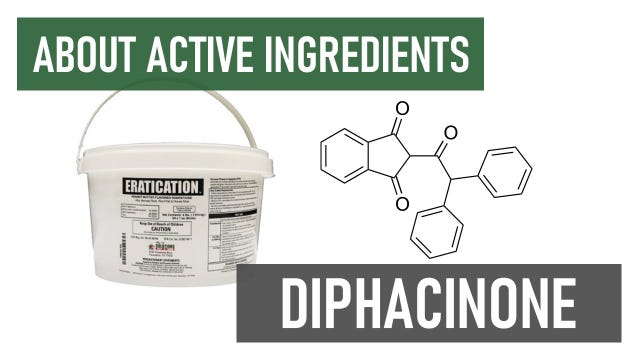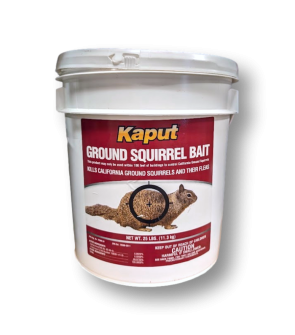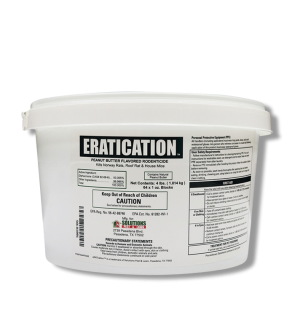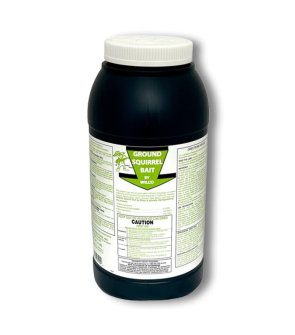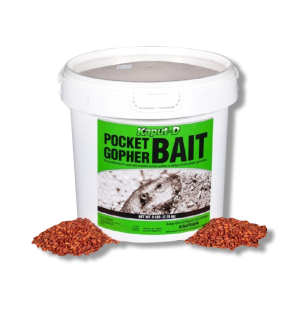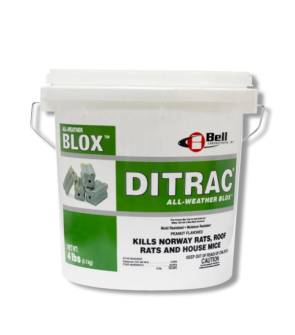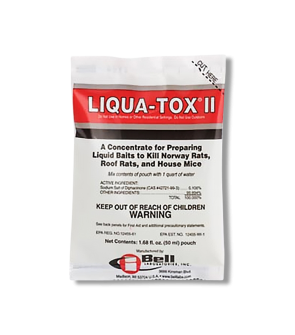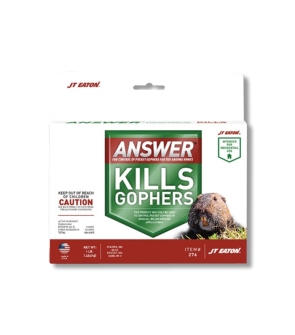Gain access to personalized product screening, the best pricing, rewards, and more!
Most Effective Products
Diphacinone
Diphacinone is the main ingredient used in rodenticide bait products for rodent control.
Solutions Pest & Lawn is proud to carry products containing the active ingredient Diphacinone. This page will give you an overview of Diphacinone and why it effectively kills rat and mouse infestations. You can also shop and browse the recommended Diphacinone-based products we have in stock.
What is Diphacinone?

Diphacinone, first registered for use as a rodenticide in the 1950s, is a First Generation Anticoagulant Rodenticide (FGAR). It is commonly used as a dry rodenticide bait to control rodent pests such as rats or mice. Baits made with diphacinone are commonly found as blocks, cakes, or pellets.
How Does Diphacinone Work?
Diphacinone works when ingested by targeted rodents. This ingredient is a Vitamin K antagonist and anticoagulant, so it stops the blood from clotting normally. This eventually leads to internal bleeding, followed by death.
Since Diphacinone is an FGAR, it will take many feedings over 1 to 2 weeks to deliver a lethal dose. Additionally, FGARs break down inside rodents faster than more lethal bait products. For this reason, FGARs are unlikely to result in secondary poisoning when a predator consumes a dead rodent that’s fed off these baits.
Benefits of Diphacinone
Diphacinone is an effective rodenticide against rodents and other small pest species. Due to its delayed effect, it is viewed as one of the more palatable types of anticoagulant rodenticides and combats bait shyness. Since the symptoms of the rodenticide aren't immediate, rodents will not know that the bait is meant to kill them.
Drawbacks of Diphacinone
The disadvantage of Diphacinone is that rodents have to eat a substantial amount of bait over several days to ingest a lethal dose. If you have multiple rodents that need to be eliminated, this may cause the attempt to eradicate them to fail because they may get bored with eating the bait and want to eat something else.
Is Diphacinone Safe?
Diphacinone rodenticides are safe when applied according to their label directions. To properly use baits containing diphacinone, we recommend you use your product along with a Rat & Mouse Bait Station. Our Rat & Mouse Bait Stations are tamper-proof and made with durable plastic, so children, pets, or non-target animals can’t access the bait.
That being said, always wear the proper personal protective equipment (PPE) when applying diphacinone bait products and keep them out of the reach of children or pets. This ingredient may still cause harm to anyone when ingested.
What To Expect
Once the target rodent ingests Diphacinone, it absorbs into the liver and interferes with synthesizing vitamin K-dependent clotting factors. Eventually, the blood is unable to clot and permeates the artery walls. The rodent dies of multiple causes related to blood loss, such as internal bleeding. You should expect Diphacinone to eliminate rodents within a matter of days after feeding.
How to Use Eratication; A Diphacinone Rodent Bait Block

If you’re looking for effective baits to eliminate your rodent problem, check out Eratication Rodent Bait. Eratication is a synthetic rodenticide bait block made with 0.005% diphacinone. Use this product with the Solutions Rat & Mouse Tamper Proof Bait Station.
Wear gloves, and load your bait stations with Eratication bait blocks. Eratication blocks come with pre-drilled holes for easy placement on your station’s rods. The amount you’ll need depends on the rodent you’re targeting. For Norway and Roof Rats, apply 4 to 16 blocks per station. For mice, you only need 1 block per station.
Place the stations about 15 to 20 feet apart where you’ve noticed rodent activity. To determine the best spots to bait, look for grease marks along walls, fur, rodent droppings, gnaw marks, and rodent burrows.
Check your bait stations every few days for activity and replenish bait as needed. Keep the stations supplied for at least 15 days to ensure all pests in the area can eat the bait. After one week, you should start to see visible declines in rodent activity.






